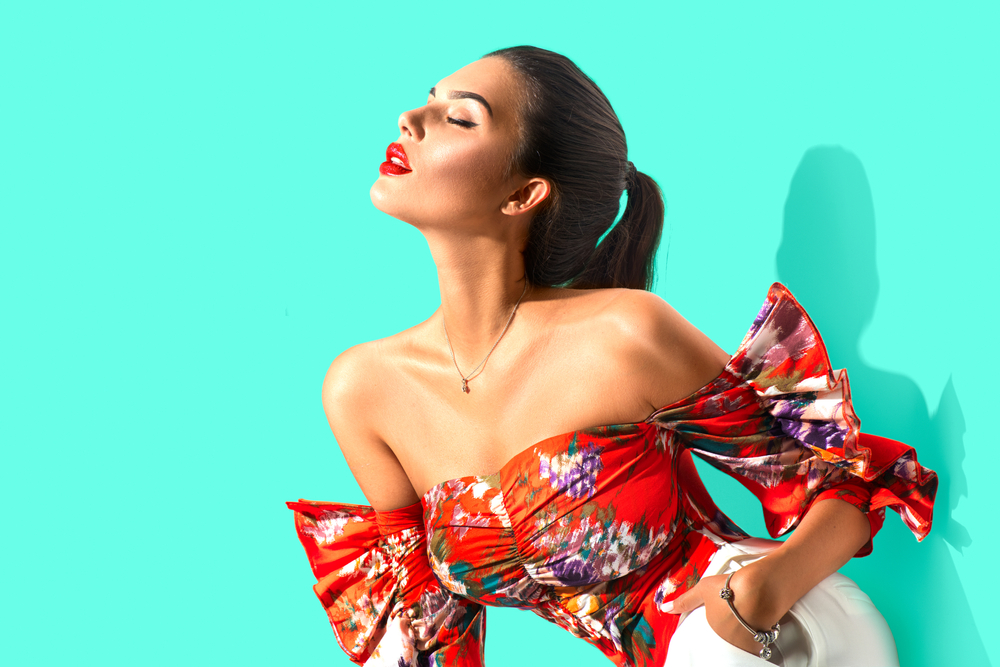
The Hidden Secrets of the Modeling Industry: Unveiling the Glamorous World and its Challenges in Photoshoots

The modelling industry has always been seen as a glamorous and desirable world, filled with beautiful people, luxurious photo shoots, and high-profile fashion shows. However, beneath the surface, there lies a complex and challenging industry that many aspiring models are unaware of. In this article, we will delve into the hidden secrets of the modeling industry, shedding light on the realities and difficulties of the profession.
The Illusion of Perfection
One of the most glaring secrets of the modeling industry is the illusion of perfection portrayed in photographs and on the runway. Models are expected to have flawless skin, perfect proportions, and impeccable features. However, what many people fail to realize is that even the most stunning models often have their imperfections edited out through the magic of post-production. This airbrushing and retouching can create an unrealistic standard of beauty that is unattainable for most individuals.
Behind the scenes, models spend hours in hair and makeup, working with skilled professionals to create the illusion of perfection. Their bodies are contorted and manipulated into pose after pose, all in an effort to capture that perfect shot. The pressure to conform to society's definition of beauty can be overwhelming, leading to low self-esteem and body image issues.
Challenges in Photoshoots
While photoshoots may seem effortless and glamorous from the outside, they involve demanding physical and emotional challenges. Models are often required to endure uncomfortable and sometimes painful positions for extended periods of time. They must hold poses that may be unnatural or strenuous, all while maintaining a serene and captivating expression. The constant pressure to perform can be mentally and physically exhausting.
In addition to the physical demands, models also face the challenge of working with different photographers and art directors, each with their own unique vision. They must quickly adapt to different styles and follow directions precisely, all while maintaining professionalism and composure. This ability to be versatile and adaptable is a crucial skill for success in the industry.
The Dark Side of the Industry
While the modeling industry has undoubtedly given rise to some of the world's most famous and successful individuals, it is not without its darker side. The pressure to maintain a certain image and fit into narrow beauty standards can lead to unhealthy practices such as crash dieting, excessive exercise, and substance abuse. Models may also face exploitation and mistreatment from photographers and agencies seeking to take advantage of their vulnerability.
Furthermore, the industry has a notorious reputation for ageism, favoring younger models and discarding older ones. Many models face the harsh reality of being "too old" for the industry, often being forced to retire at a younger age than in other professions. This emphasis on youth perpetuates societal ideas of beauty and contributes to the unrealistic expectations placed on models.
Breaking Stereotypes and Facilitating Change
Despite the challenges and hidden secrets, the modeling industry is slowly evolving to become more inclusive and diverse. In recent years, there has been a push for greater representation of different body types, racial backgrounds, and gender identities. Brands and agencies are starting to recognize the importance of embracing individuality and celebrating the uniqueness of every model.
Through the power of social media and campaigns that promote body positivity, models and activists are using their platforms to challenge the traditional beauty standards and promote inclusivity. They are advocating for change and encouraging others to embrace their flaws and love themselves as they are.
Frequently Asked Questions
1. Q: How can I become a model?
A: To become a model, it is important to research reputable agencies, create a portfolio of professional photographs, and attend open casting calls or submit your portfolio to agencies directly.
2. Q: Are all models expected to be extremely thin?
A: While there is still a preference for thin models in the industry, the demand for diversity and inclusivity is growing. Different body types are becoming more accepted, and there are opportunities for models of all sizes.
3. Q: Do models always get paid for their work?
A: Models can be paid varying amounts depending on their level of experience, the type of job, and the contract they have with the agency or client. Some jobs may be done on a TFP (time for print) basis, where models receive photos instead of monetary compensation.
4. Q: What are the dangers of the modeling industry?
A: The modeling industry can be challenging both mentally and physically. Models may face pressure to maintain certain body standards, and there are risks of exploitation and mistreatment. It is important to prioritize one's health and safety.
5. Q: Can anyone become a model?
A: While the modeling industry has become more inclusive, there are still certain requirements such as height and proportions that some agencies and clients may look for. However, there are also opportunities in niche markets and alternative modeling categories for those who may not fit traditional standards.
In conclusion, the modeling industry may appear glamorous and enchanting on the surface, but it is important to understand the hidden secrets and challenges that models face. By shedding light on these realities, we can begin to promote a more inclusive and supportive industry that celebrates diversity and prioritizes the well-being of its models.
Other useful resources
- https://www.planetmodelphoto.com/models/modeling/usa/charlotte/nc-north-carolina
- https://en.wikipedia.org/wiki/Modeling_agency